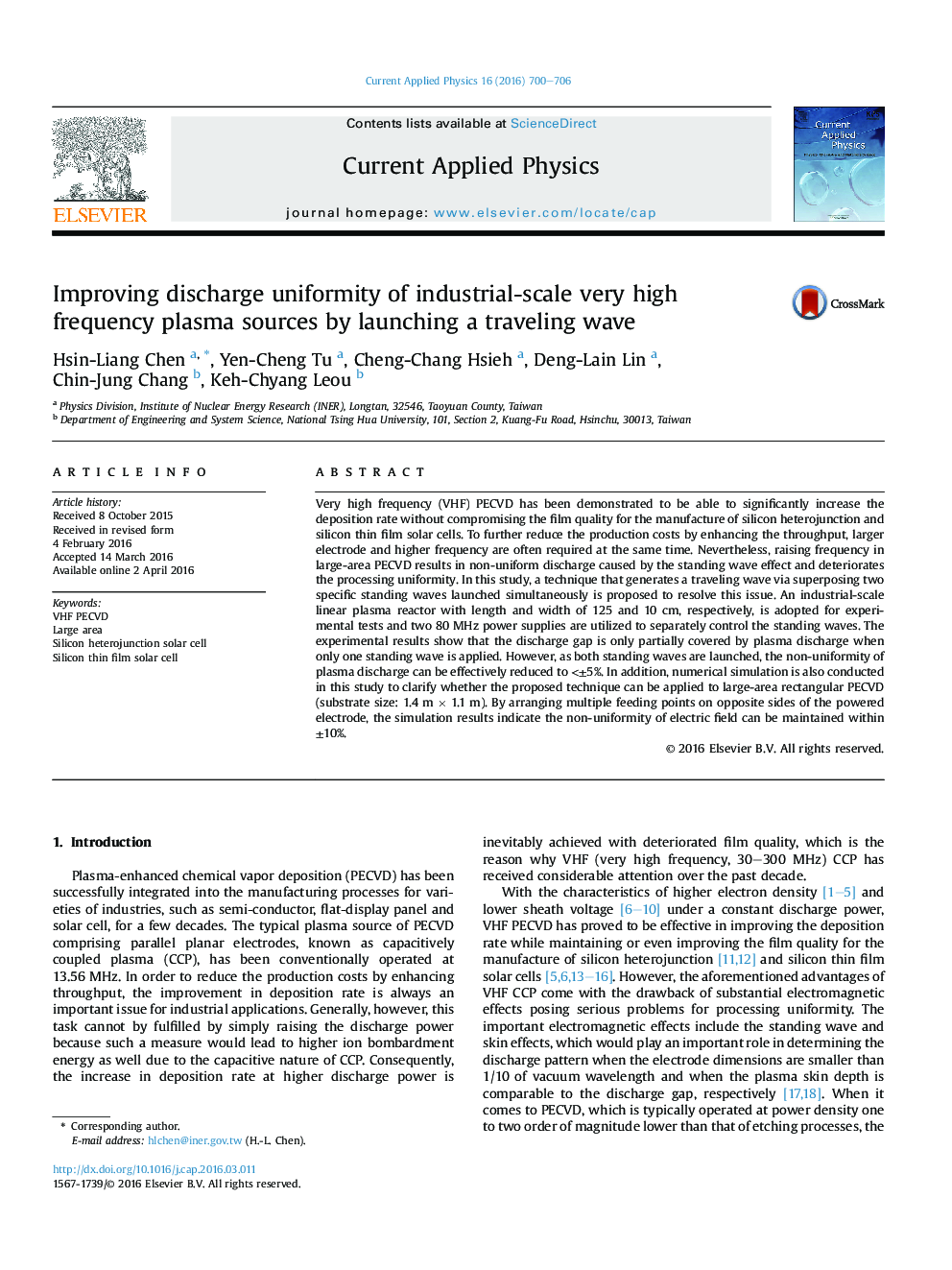| Article ID | Journal | Published Year | Pages | File Type |
|---|---|---|---|---|
| 1785559 | Current Applied Physics | 2016 | 7 Pages |
•Experimental demonstration of uniform plasma in an 80 MHz linear plasma reactor (>1 m) by generating a traveling wave.•Numerical verification of uniform plasma in a G5.5 VHF PECVD by generating a traveling wave.•The essential conditions to generate a traveling wave by superposing two standing waves are discussed in details.•Discharge behaviors obtained by the superposition of two standing waves can be well predicted by linear superposition rule.
Very high frequency (VHF) PECVD has been demonstrated to be able to significantly increase the deposition rate without compromising the film quality for the manufacture of silicon heterojunction and silicon thin film solar cells. To further reduce the production costs by enhancing the throughput, larger electrode and higher frequency are often required at the same time. Nevertheless, raising frequency in large-area PECVD results in non-uniform discharge caused by the standing wave effect and deteriorates the processing uniformity. In this study, a technique that generates a traveling wave via superposing two specific standing waves launched simultaneously is proposed to resolve this issue. An industrial-scale linear plasma reactor with length and width of 125 and 10 cm, respectively, is adopted for experimental tests and two 80 MHz power supplies are utilized to separately control the standing waves. The experimental results show that the discharge gap is only partially covered by plasma discharge when only one standing wave is applied. However, as both standing waves are launched, the non-uniformity of plasma discharge can be effectively reduced to <±5%. In addition, numerical simulation is also conducted in this study to clarify whether the proposed technique can be applied to large-area rectangular PECVD (substrate size: 1.4 m × 1.1 m). By arranging multiple feeding points on opposite sides of the powered electrode, the simulation results indicate the non-uniformity of electric field can be maintained within ±10%.
